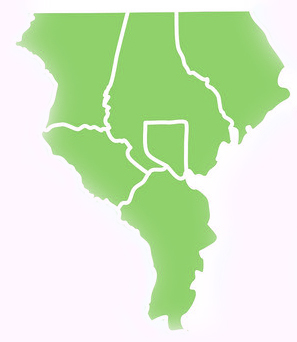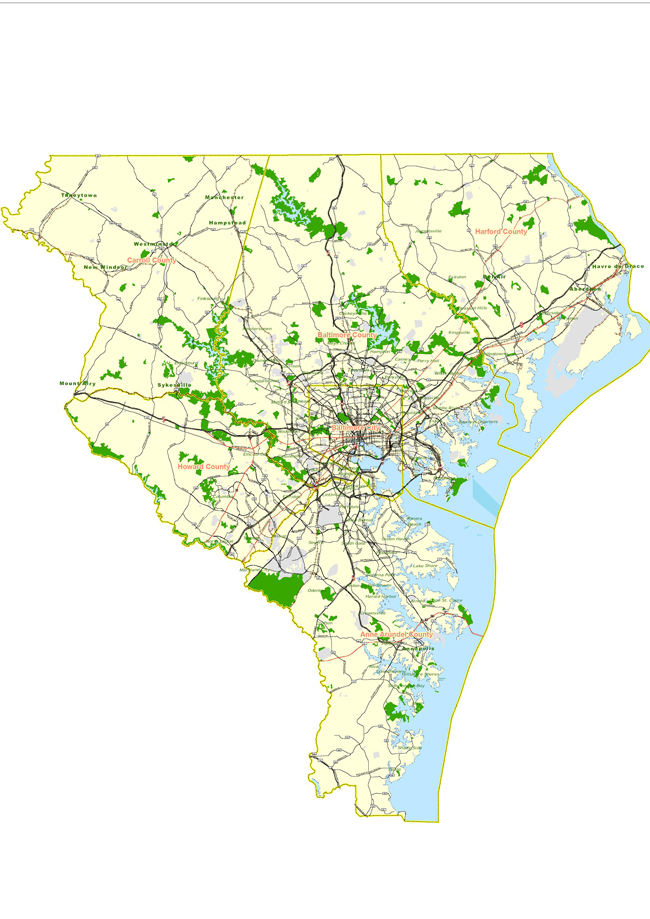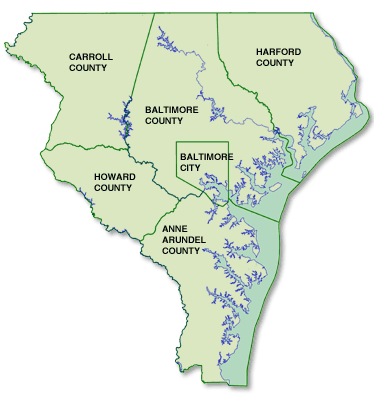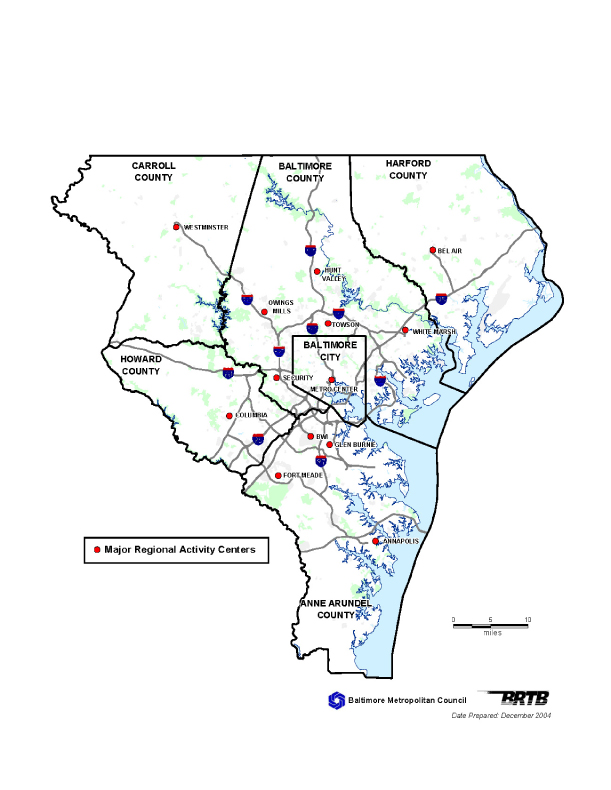|
WHAT PUBLIC AND PRIVATE ENTITIES DO WE ALREADY HAVE IN THE CENTRAL MARYLAND REGION THAT HAVE A BEARING ON AND POTENTIAL FOR REGIONAL COVERNANCE IN THE FUTURE?
In terms of governmental officials representing the six local political jurisdictions (five counties and one city), this is a complex and diverse situation:
1) There are four county executives (in Anne Arundel, Baltimore, Harford, and Howard counties; Carroll County has a board of commissioners; and Baltimore City has a mayor. Each of these government heads supervises staffs, employees, and various appointed advisory groups. These local governments include key functions such as schooling, health, recreation, public works, law enforcement and many others. Each of these local governments also has a planning staff.
2) Elected local and state legislative official positions for the five counties and the City are as follows (in alphabetical order):
ANNE ARUNDEL COUNTY has a Council Chair and Vice-Chair, and 5 other councilpersons. It has 5 state senators and 15 state delegates.
BALTIMORE CITY has a Council President and 14 councilpersons. It has 6 state senators and 16 state delegates.
BALTIMORE COUNTY has a Council Chair and 6 other councilpersons. It has 8 state senators and 23 state delegates.
CARROLL COUNTY has a Commission form of local government, with a President, a Vice-President and 3 other commissioners. It has 3 state senators and 8 state delegates.
HARFORD COUNTY has a Council President and 6 other councilpersons, one of whom is also chosen to be Vice-President. It has 3 state senators and 8 state delegates.
HOWARD COUNTY has a President, a Vice-President, and 3 other councilpersons. It has 3 state senators and 9 state delegates.
Of the total of 23 state legislative districts in this region of five counties and Baltimore City, four districts (7, 9. 12. and 44) are shared in some combination of groups of two between the following local jurisdictions: Baltimore City, Baltimore County, Carroll County, Harford County, and Howard County.
3) In terms of FEDERAL representation, these six local jurisdictions are represented in the US Congress by representatives from 7 of Maryland's 8 congressional districts, shared and overlapping among these 6 local jurisdictions.
Of course, both state and federal political legislative districts may change as a result of the 2020 census.
________________________
In addition to the local governmental elected and appointed representatives serving the six jurisdictions in the Region, some other governmental and non-governmental work of developing our region has been ongoing for many years.
Here are twenty-one (21) various examples of current Central Maryland regional groups:
Governmental:
- Baltimore Metropolitan Council (includes the Baltimore Regional Transportation Board): https://www.baltometro.org/
- Central Maryland Regional Transit Plan [NOTE: Carroll County is not included] – part of the Maryland Transit Administration of the Maryland State Department of Transportation: https://rtp.mta.maryland.gov/
Not-for-Profit or Private
|











